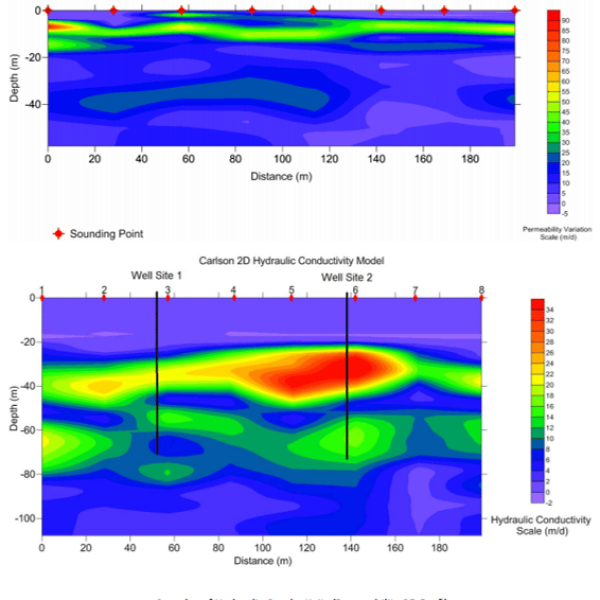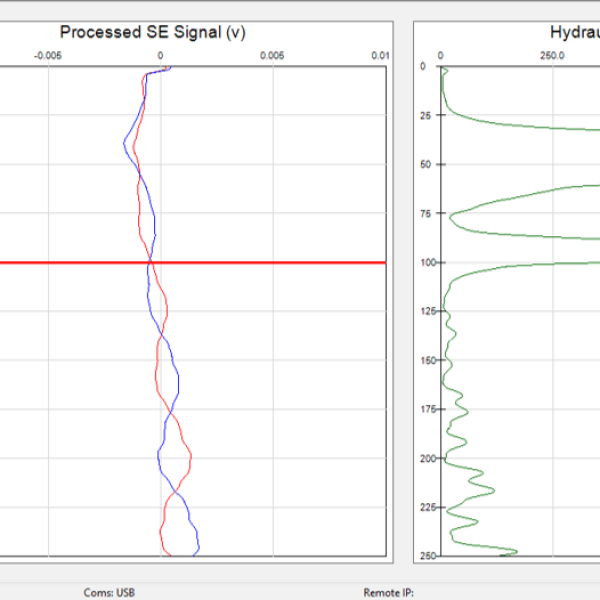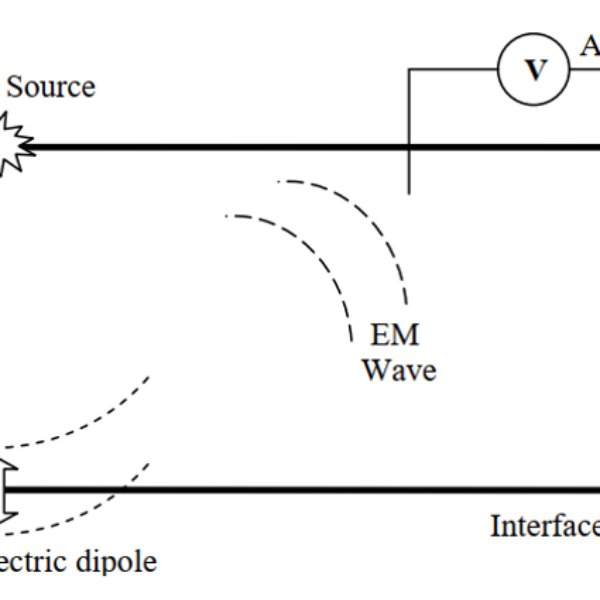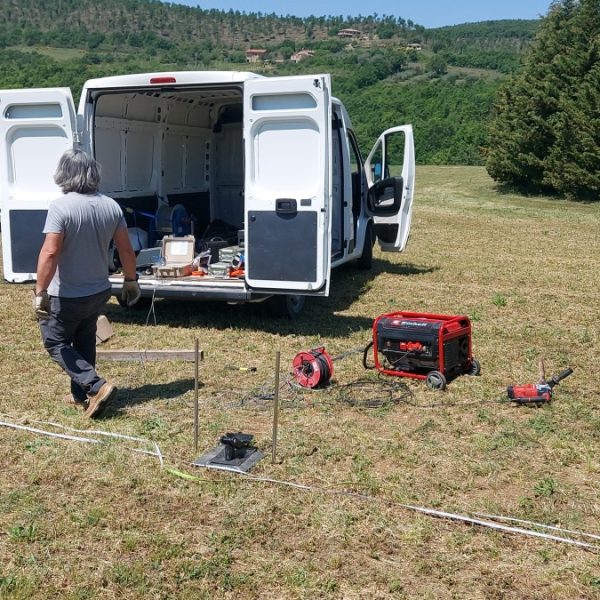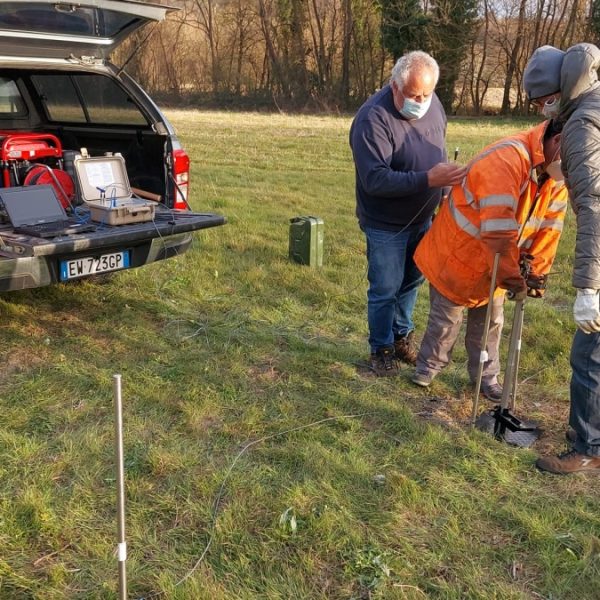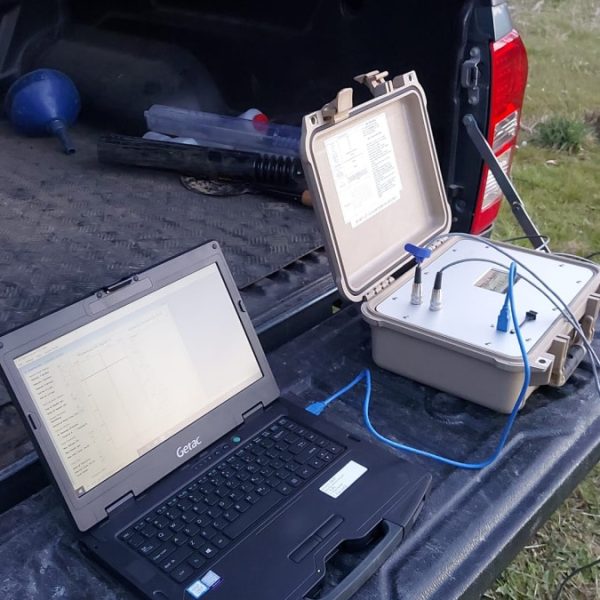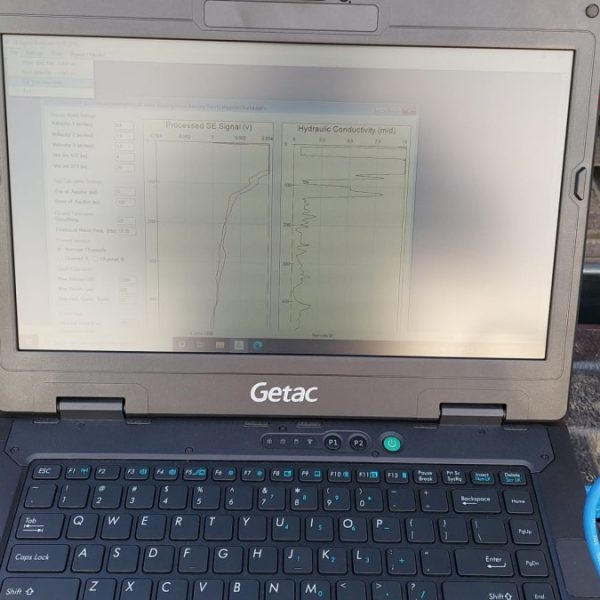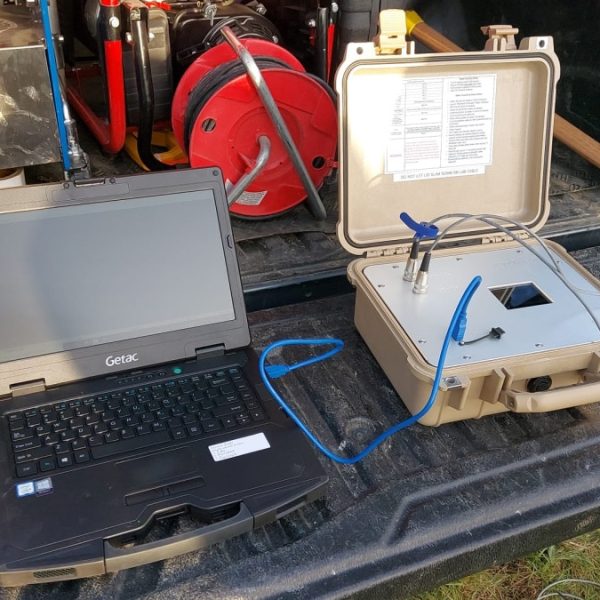Seismoelectric surveys
The propagation of seismic waves in the ground is associated with a set of so-called seismoelectric phenomena. At least four of these phenomena are interesting from a geophysical point of view: 1) modulation of the electrical resistivity of materials by seismic stresses in the presence of uniform telluric currents; 2) piezoelectric effects in the presence of quartz materials; 3) generation of impulsive signals in the domain of high audio and radio frequencies; 4) electrokinetic effects analogous to “streaming potentials”. The latter effects are the most common and the most interesting from the point of view of hydrogeological applications.
In a saturated porous medium, the adsorption of electric charges (ions) on the surface of the grains creates an excess of electric charges of the opposite sign in the fluid (or fluids) contained in the pores. In other words, what is commonly called the “electrical double layer” is created. When a seismic wave propagates in a medium of this type, the electric charges present in the fluid undergo a relative displacement with respect to the electric charges adsorbed on the surface of the grains. This displacement generates an electric current flow which results in a macroscopic separation of electric charges which induces an electric field. The intensity of this electric field depends on the electrochemical properties of the fluid-solid interface (therefore on the type of fluid such as air, water or hydrocarbon, and on the type of solid), on the mechanical properties and on the structure of the porous medium (elastic modulus, porosity, hydraulic permeability and degree of saturation).
A conventional seismic source generates seismic waves (Figure 1). Upon contact with the air and water present in the pores of a porous material, a portion of the incident seismic wave is converted into a slow Biot wave. The slow Biot wave, at seismic frequencies, is a diffusive pressure wave. This wave generates a relative displacement between the fluid (water or other liquid) present in the pores and the grains of the rock matrix, creating a distortion of the electric dipoles on the surface of the grains. This distortion generates a time-varying electric field with a bond similar to that of the incident seismic wave. The variable electric field produces an electromagnetic wave that propagates up to the surface where it can be picked up by a set of antennas (electrodes) suitably placed on the ground.
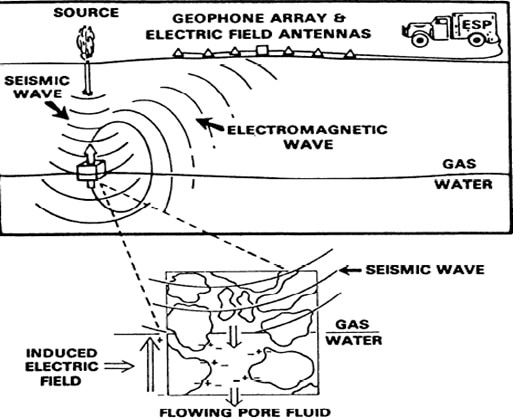
Through the use of the Seismic-Electric geophysical methodology combined with the analysis of geological, hydrogeological and hydraulic information from wells close to the study area, we provide a complete report with the location, depth and thickness of the aquifer.
Through the following 2D Models we will be able to visualize the hydraulic conductivity, the porosity and finally a table with the estimated flow rate data in the saturated areas is added to the report.
Services
- 2D hydraulic conductivity tomography
- 2D porosity tomography
- Vertical seismoelectric soundings SE
Applications
- Studies for the research of aquifers
- Studies for the research of geothermal reservoirs
- Studies for the research of oil tanks
Equipments
- GF6 and PL14 from the Aqualocate Company of Texas

